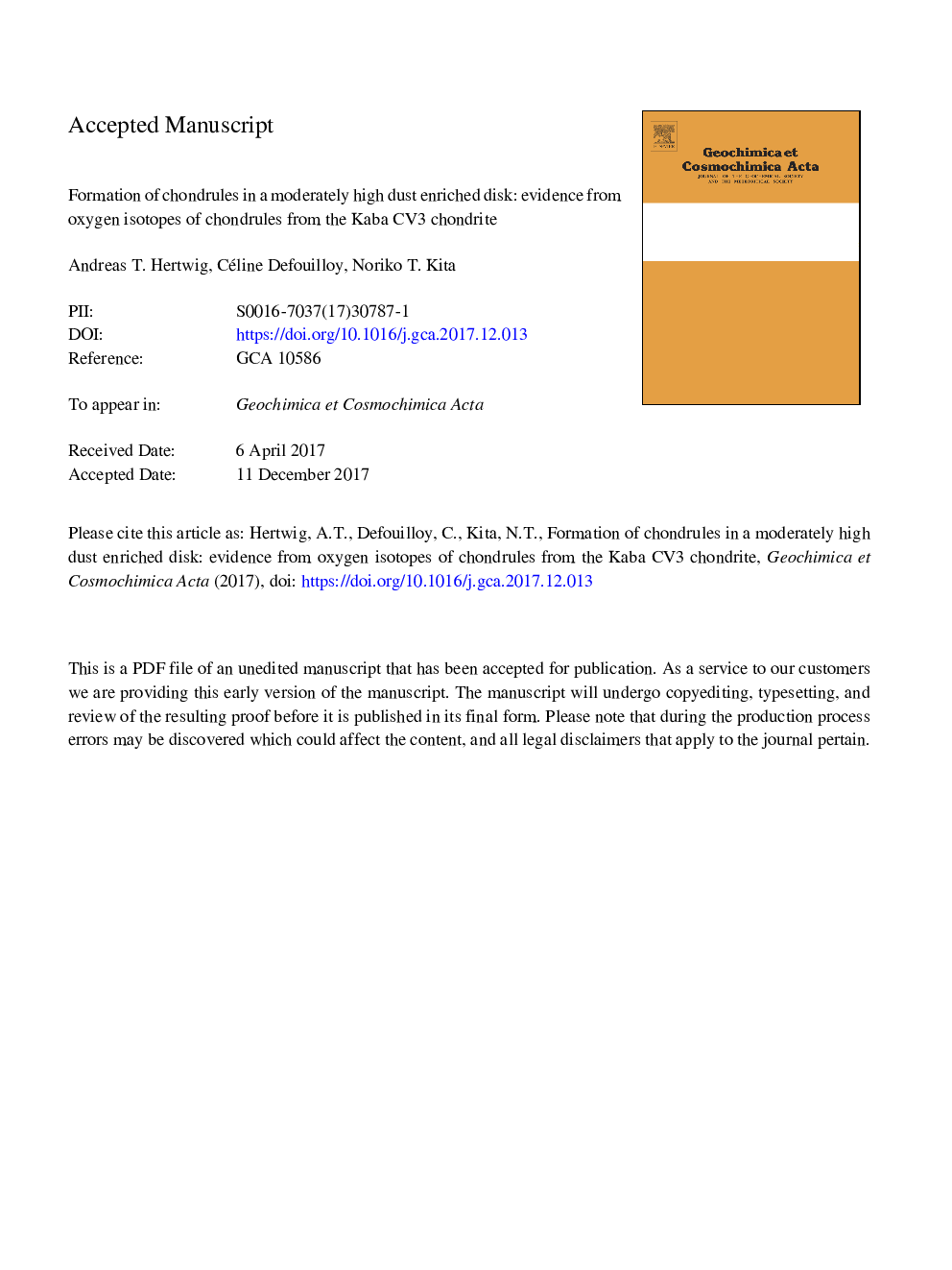| Article ID | Journal | Published Year | Pages | File Type |
|---|---|---|---|---|
| 8910866 | Geochimica et Cosmochimica Acta | 2018 | 53 Pages |
Abstract
Investigation of the Mg#-Î17O relationship revealed that Î17O values tend to increase with decreasing Mg#'s, similar to those observed for CR chondrites though data from Kaba cluster at the high Mg# (>98) and the low Î17O end (â6â° and â4â°). A mass balance model involving 16O-rich anhydrous dust (Î17Oâ¯=â¯â8â°) and 16O-poor water ice (Î17Oâ¯=â¯+2â°) in the chondrule precursors suggests that type I chondrules in Kaba would have formed in a moderately high dust enriched protoplanetary disk at relatively dry conditions (â¼50-100à dust enrichment compared to Solar abundance gas and less than 0.6à ice enhancement relative to CI chondritic dust). The olivine-rich type II chondrule probably formed in a disk with higher dust enrichment (â¼2000à Solar).
Related Topics
Physical Sciences and Engineering
Earth and Planetary Sciences
Geochemistry and Petrology
Authors
Andreas T. Hertwig, Céline Defouilloy, Noriko T. Kita,
